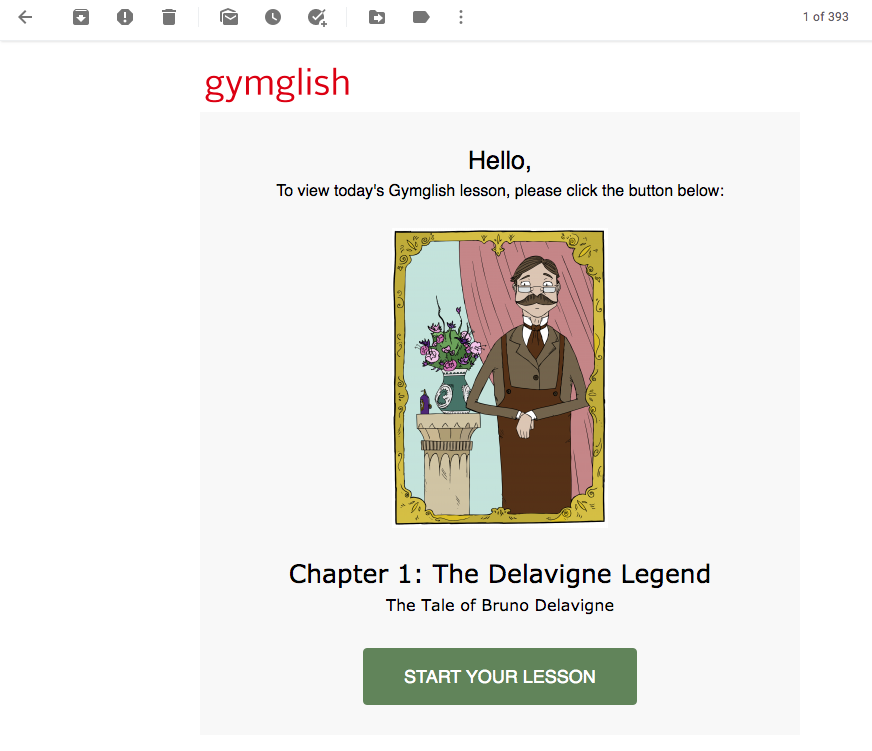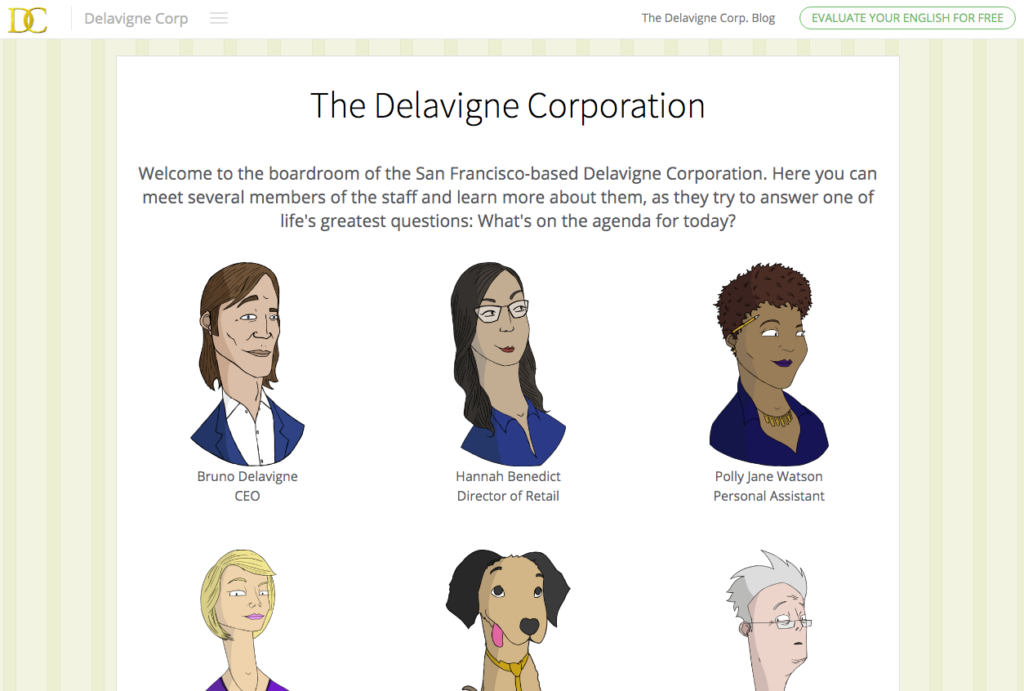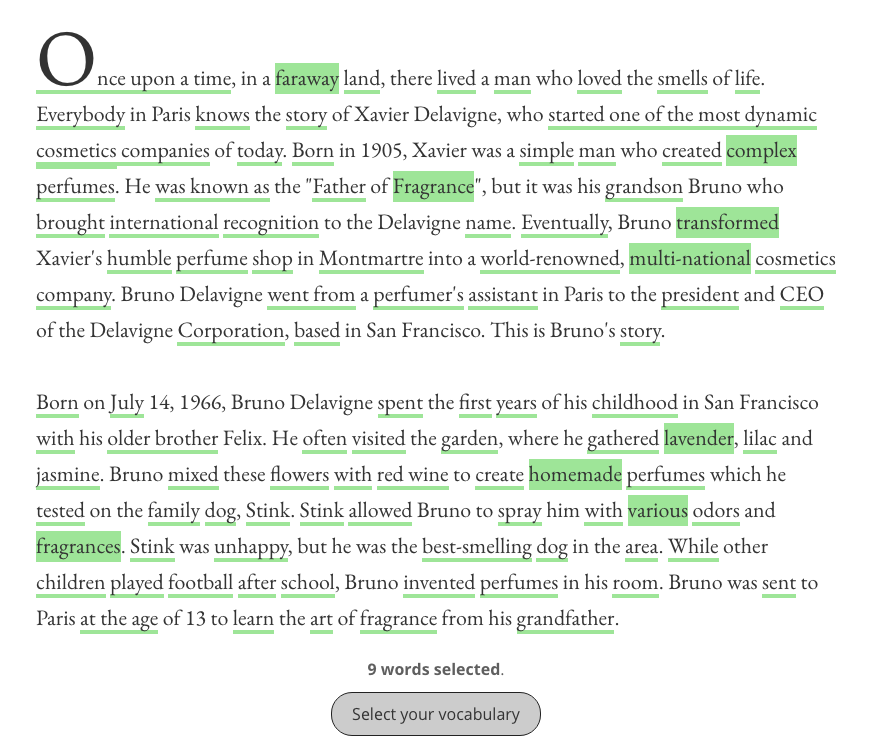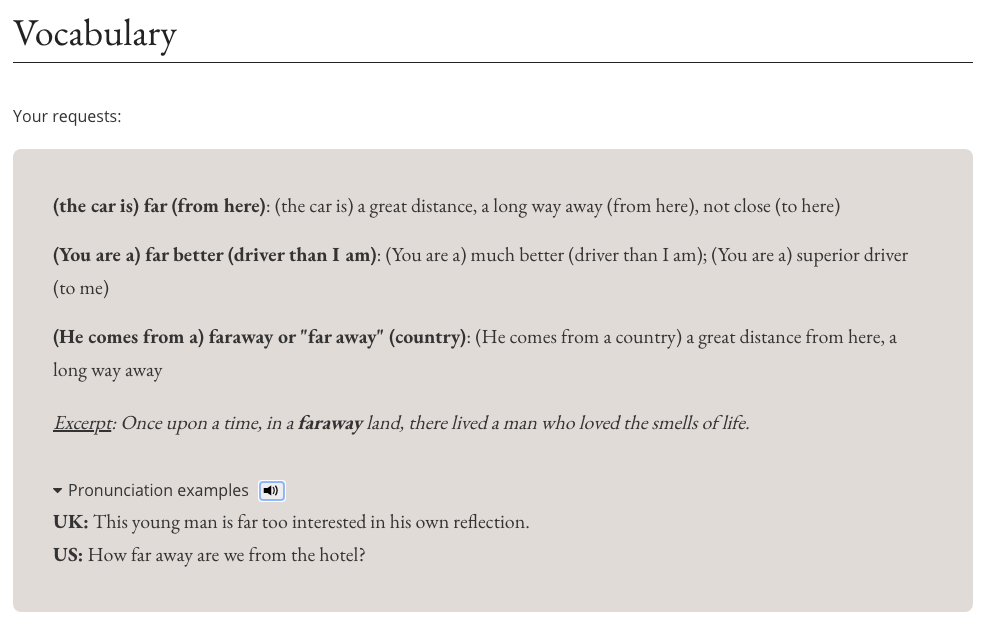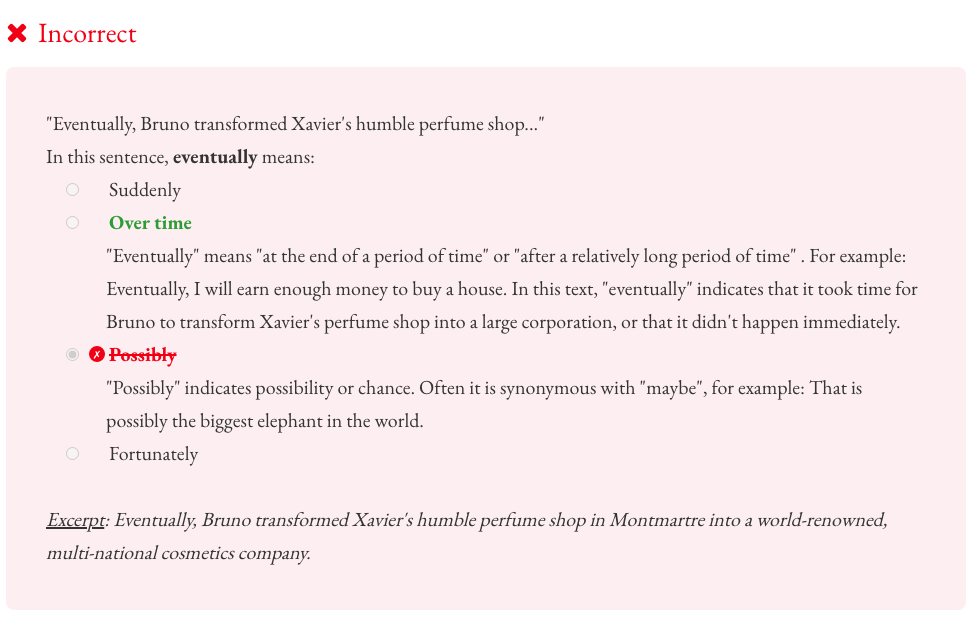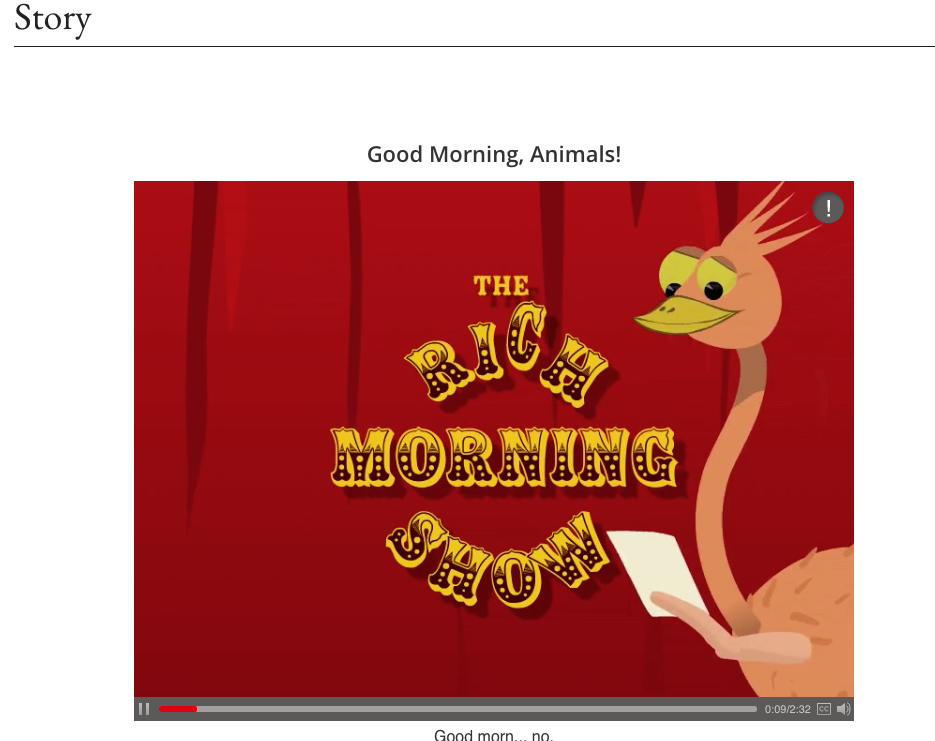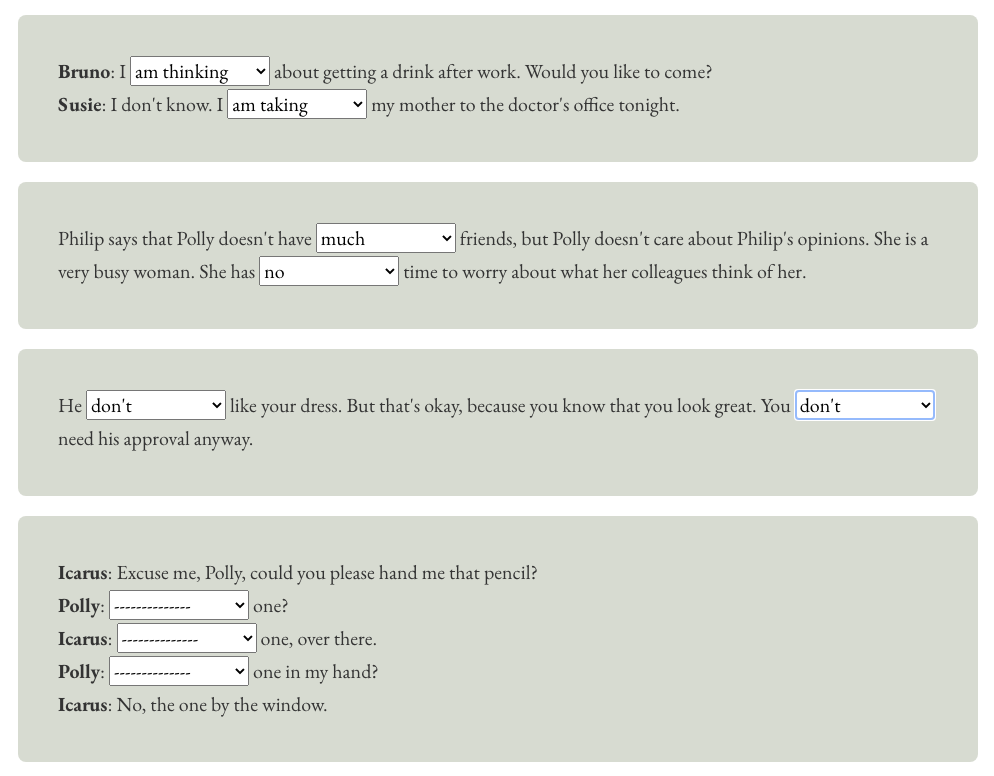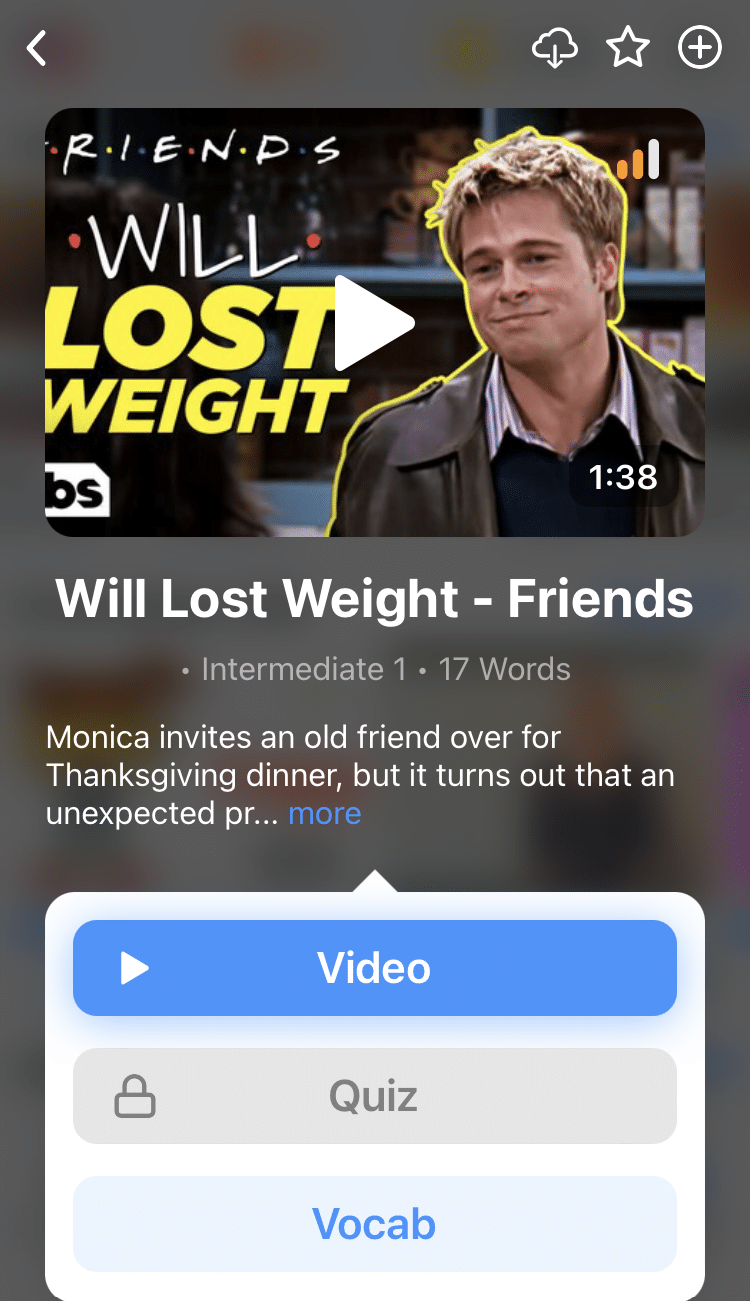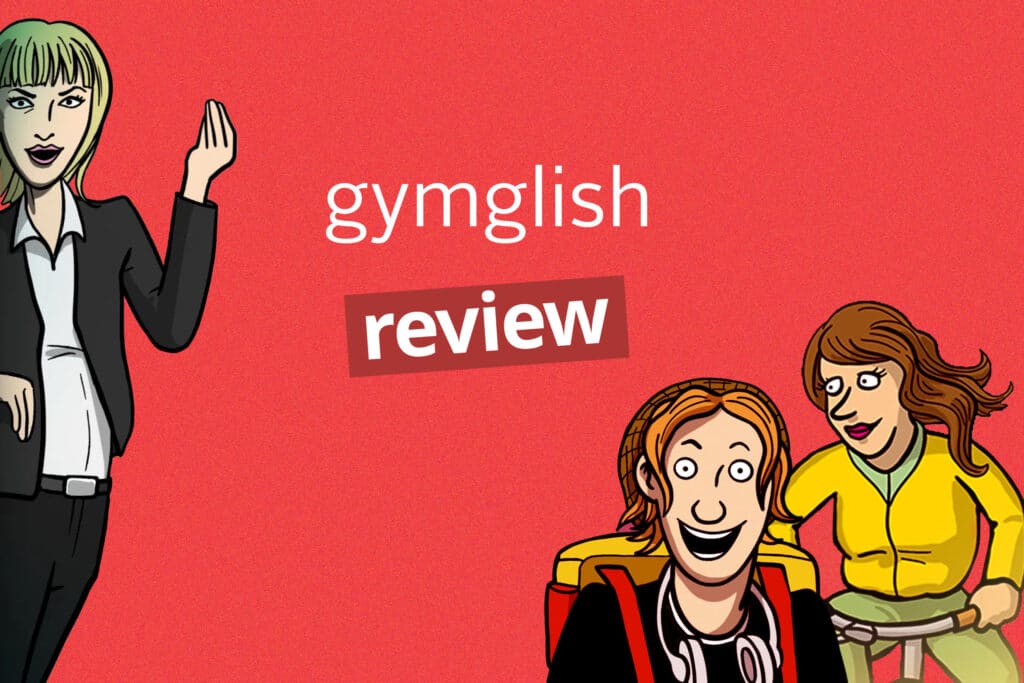
Gymglish Review: Bespoke Creative Lessons but Structure May Be Frustrating for Self-starters
As an English learner, you might have stumbled across the popular Gymglish, which is a tool that offers personalized English lessons delivered straight to your email inbox, during your hunt for great online problems
In this post, I’m going to review Gymglish by looking at its key features and its pros and cons. I’ll also try to answer the big question: is it worth it and does it work?
After two weeks of steady use, what I found was Gymglish is a fun, creative and bespoke English language learning method, but because Gymglish is super structured, people who like to have control over their own learning journey may find it a little frustrating. It may also be a little difficult for true beginners.
Read on to find out the answers to all your Gymglish questions!
Contents
- The Key Features of Gymglish
- Pros of Using Gymglish to Learn English
-
- Adaptive learning method makes every lesson count
- Fun, quirky characters, stories and visuals
- Short lessons in your inbox make it easy to study
- Lots of opportunities to improve English comprehension skills
- Instead of yes/no corrections, Gymglish provides detailed feedback
- Cultural focus in each lesson
- Aimigo, their AI tutor
- The Cons of Gymglish
- Gymglish Versus Other Language Learning Programs
- What Does Gymglish Cost?
- The Final Verdict on Gymglish
- And One More Thing...
Download: This blog post is available as a convenient and portable PDF that you can take anywhere. Click here to get a copy. (Download)
The Key Features of Gymglish
Bespoke English lessons via email
What makes Gymglish unique among other English learning programs is that lessons are emailed to you every day. Simply click on the link in your email inbox and you’re brought into the Gymglish daily lesson.
A typical Gymglish lesson will involve you first reading an illustrated story and answering some comprehension questions about it. The illustrations that accompany each lesson are beautiful and fun, and each Gymglish lesson is quite visually appealing and stylish.
Next, you get an audio clip that continues the story, followed by a grammar quiz. After you complete a lesson, you receive detailed feedback on your performance, along with corrections and explanations.
The lessons conclude with a video or music clip, usually from an English film, in a section called “Today’s Dessert.” This part of the lesson is extra to the original lesson, and it’s not available to all lessons. “Today’s Dessert” is played along with a quote and/or a cool fact related to the video, so that you can improve your general English knowledge and pick up cultural references.
All of the lesson’s stories focus on the Delavigne Corporation. This is a fictional San Francisco-based perfume company founded by the famous cosmetics guru Bruno Delavigne, who learned Kung Fu in China and loves to tango and play with his dog Stink.
An entire mythology has been created around Delavigne Corporation for the purpose of the Gymglish lessons, complete with a business website where you can read about each employee’s life and experiences. You’re bound to be drawn into the story, thanks to the cast of colorful characters as well as the funny situations they find themselves in at work.
In addition to the interesting story that the lessons follow, Gymglish also sends you daily reminders to continue with your learning and keep you motivated.
As stated before, Gymglish uses an adaptive learning approach. That means that after 10 lessons, Gymglish will learn your strengths and weaknesses, and the lessons will be customized for your skill level. If you have trouble answering difficult questions, the program will adjust itself and give you easier questions and exercises to solve.
Aimigo, the AI tutor
Extra vocabulary emails
After each spoken or written part of a lesson, I was given a transcript of the spoken or written text. Then, you read the text and click on words or phrases that you don’t know or don’t understand. Then these words and phrases are highlighted.
Then, later on, you get a special “extra vocabulary” email that contains all of the words you selected. You can then review the words and hear them spoken with a British or American accent.
Pros of Using Gymglish to Learn English
Gymglish provides a very unique learning experience and many of its features aren’t available anywhere else. To find out if it’s the best platform for your needs, let’s see what makes this program great.
Adaptive learning method makes every lesson count
A common problem with language schools and courses is that they assume everyone is at the same level, or has equal capabilities.
By contrast, Gymglish’s adaptive learning method makes sure that every lesson matches your individual needs. You won’t waste time on material that’s too hard or too easy—therefore your skills will grow more quickly and efficiently.
From the very first lesson, I had the feeling that Gymglish was trying to learn more about me as a learner. After reading the first chapter of Delavigne Corporation during lesson one, I was given the opportunity to choose words in the transcript that I didn’t understand or found difficult.
By selecting these words, I got a detailed look at them in my correction email complete with explanations of what the chosen words meant as well as example sentences and audio recordings. Not only is this a good way for Gymglish to learn my level of English, but it also allows me to grow my own comprehension and vocabulary skills.
Gymglish’s adaptive learning method is like having a private tutor who offers you personalized lessons and feedback.
Fun, quirky characters, stories and visuals
Gymglish obviously has some great creatives behind the scenes crafting their bespoke lessons. Almost immediately, I found their bespoke lessons to be entertaining, fun, creative and addictive.
The characters are well drawn and the story lines are as fun as watching soap operas, with intriguing plot twists and action filled narratives. Super fun.
I also love the quirky aesthetic of Gymglish. It reminds me a bit of Matt Judge, the creator of “Beavis and Butthead” and “Daria,” two clever animated shows from the 1990s MTV.
Short lessons in your inbox make it easy to study
Many of us have very busy schedules and can’t dedicate long hours to English learning every day.
With Gymglish, all you need is a decent internet connection to practice English and a quarter of an hour!
Gymglish’s daily lessons are pretty short and usually won’t take more than 15 minutes to complete. It’s perfect for your commute, your lunch break or any other “downtime” in your day. Better yet, because lessons are emailed to you, it’s easy to access them anywhere—on a phone, tablet or computer.
This is a great way to keep learners motivated because it remains a constant reminder to work on their English. Further, Gymglish’s personalized review materials ensure you don’t even need a notepad to take down notes.
If you miss a day, don’t worry! Your lesson will roll over to the next day. In fact, each day’s lesson is still active in your lesson dashboard, and you can follow the link sent to your email even if you click it on a different day from when it was sent.
Lots of opportunities to improve English comprehension skills
With Gymglish, you can be sure that your listening and reading comprehension skills will grow.
I found that Gymglish’s audio dialogues are perfect for improving English listening skills, since I wasn’t just listening but also getting quizzed on what I understood.
The audio dialogues use slow, clear spoken English, and there’s a useful subtitle under the dialogue that let me know what dialogue of English I was listening to. This is perfect for learners who perhaps want to practice a specific dialect of English, whether American, British, Australian or some other accent.
As mentioned earlier, there are also some videos and clips from English movies that’ll help you learn a bit about English-speaking cultures and get some experience listening to actual native English audio instead of learning material.
Similarly, by reading the stories in the lessons, you’ll naturally build your reading skills while you learn English. Since the stories are humorous and interesting, it’s a lot more fun and easy than reading an English textbook.
Instead of yes/no corrections, Gymglish provides detailed feedback
A lot of English apps and online quizzes simply tell you if you’ve answered a question correctly or not. So if you answered correctly by guessing, you wouldn’t be sure why you were right—and if you answered incorrectly, you’d never know where you went wrong.
But one of the things I love about Gymglish is that they don’t just tell you where you went wrong, they will ensure that you won’t get into such trouble ever again.
Upon opening my email, I was surprised at the level of detail that Gymglish had included in correcting my work. Each question was broken down, letting me know what I had gotten right and what I had gotten wrong. For both types of corrections, Gymglish explained why each answer was right or wrong, complete with grammatical examples, audio recordings and plenty of example sentences.
Moreover, if you’ve made a mistake on a question, you’ll notice it will appear again in subsequent (following) lessons so that you can practice not making the same mistake in the future. Plus, you can mark out vocabulary and idioms that interest you in the corrections email as well, and they’ll be added to a personalized review list.
Cultural focus in each lesson
Each Gymglish lesson contains a cultural component. In my first two lessons, there was a music video complete with the lyrics and a clip from an American movie by Woody Allen.
Aimigo, their AI tutor
Aimigo is really fun to use, which I honestly didn’t expect. What feels like a fun chat with a friend is actually backed up by natural language processing and machine learning algorithms to understand and match your language proficiency.
Because of this Aimigo can subtly push you to learn a few new words here and there, but not be so challenging that you get lost.
Like I said, I really loved Aimigo and would recommend chatting with them as much as possible. It’s a great way to feel for yourself how much you really know (and don’t know!).
The Cons of Gymglish
While there are many positives to the program, there are some areas where Gymglish needs more work. Later in this article, we’ll give you some options to supplement your Gymglish learning for a complete, well-rounded English program.
Not suitable for all learners
If you’re a beginner, this Gymglish course isn’t for you, since you need to have basic English reading and listening skills in order to complete the lessons.
I noticed almost immediately that the language level needed to complete the lessons was quite high: the vocabulary used in Gymglish is pretty difficult, and the grammatical explanations use technical language that may be hard to understand for absolute beginners.
Also, since English is the language of instruction, it would be useful if Gymglish had a tool that offered translations into another language. For example, if I were a native French speaker using Gymglish, I’d need to use an external translation tool such as Google Translate or a dictionary to get the meanings of words in my native language.
But don’t worry! Gymglish has a separate program just for English beginners called Rich Morning.
Essentially, Rich Morning teaches English to absolute beginners in the following languages: French, Spanish, Portuguese, German, Chinese or Greek. In other words, if you speak these languages, you can learn beginner English and your native language will be used to give lesson instructions, tips and translations of English words.
Rich Morning follows the same method as the Gymglish English course: daily lessons are emailed to learners who complete them and get emailed corrections. Even the format is the same. Learners start by watching a video that follows Rich, an ostrich, and then they complete various skill-building activities such as repeating English sentences, answering comprehension questions, filling in the blanks and practicing easy English grammar.
Not much focus on speaking and writing skills
While Gymglish has fantastic audio, video and written content that will definitely engage learners to improve their English, the design of the course is such that there isn’t much room for speaking and writing practice.
Since you’re mostly learning by reading, listening and completing exercises, I found that Gymglish lessons focus mostly on input. This means that I did a lot of understanding the language in written or audio form.
This isn’t necessarily a bad thing, but there was little room for me to do output exercises where I actually got to use the language actively on my own. In the lessons’ comprehension and grammar questions, I was only able to choose the correct answer from a multiple-choice menu or write a word or two into a blank. This didn’t give me the opportunity to practice writing sentences, and it definitely didn’t allow me to write longer texts like paragraphs.
When it comes to speaking, that practice is completely missing from Gymglish lessons. There are no chances to practice speaking the language, whether recording sentences for Voice Recognition technology or actually using the language in real conversations with English native speakers.
This is a problem because output is a major part of English, especially speaking. Chances are, you’ll be speaking English in spontaneous (unplanned) conversations with native speakers. If you haven’t practiced using English in such conversations before, it’ll be very difficult for you.
Gymglish could definitely benefit from having exercises that allow learners to write longer texts in English and actually speak the language. For example, learners could answer a comprehension question that requires the learner to write a couple of sentences or they could practice repeating after a native speaker or record an answer to a comprehension question orally.
The lesson structure could be more varied
While the Gymglish illustrations that accompany each lesson are amazing and fun, the lesson flow can be a little tedious and overwhelming. Gymglish’s lesson format is pretty straightforward: read something, answer questions, watch something, answer questions, done. Over time, I imagine this will get a little boring.
Furthermore, I found some of the readings to be quite long, and the way they were formatted was intimidating. Reading long paragraphs of text on a computer and being quizzed on it may not be fun after a while, and long blocks of text would definitely scare some learners.
Shorter texts, with more videos or animated clips might have made it more friendly and engaging, as well as immediate feedback (instead of having feedback delivered at the end of the lesson).
Further, it would be nice if the feedback received was written by a real person. While the Gymglish automated feedback is detailed, having a real native speaker correct my work would allow for longer writing and even speaking exercises.
Gymglish Versus Other Language Learning Programs
Gymglish vs. FluentU
Since one of the features I most missed while using Gymglish was authentic video, I wanted to start this comparison section with FluentU, which has video at the heart of its program.
I don’t know how many times I’ve heard from foreign friends (non-native English speakers) who’ve told me that they learned English through watching movies (and TV shows and skateboarding videos, etc.). In fact, I’ve heard it so many times, I definitely believe it.
FluentU works really well for me because I’m a person who really likes to watch movies, TV, music videos, news and vlogs on YouTube already. So it feels like a really sustainable and fun way to learn and review a language and it’s worked really well for me.
I find myself spending hours on FluentU, all while feeling engaged, while 15 minutes sometimes felt like a lot on Gymglish because of its dryer learning style.
Overall, I’d choose FluentU here, but I really think FluentU and Gymglish would complement each other nicely, and the cost would still be pretty affordable.
FluentU takes authentic videos—like music videos, movie trailers, news and inspiring talks—and turns them into personalized language learning lessons.
You can try FluentU for free for 2 weeks. Check out the website or download the iOS app or Android app.
P.S. Click here to take advantage of our current sale! (Expires at the end of this month.)
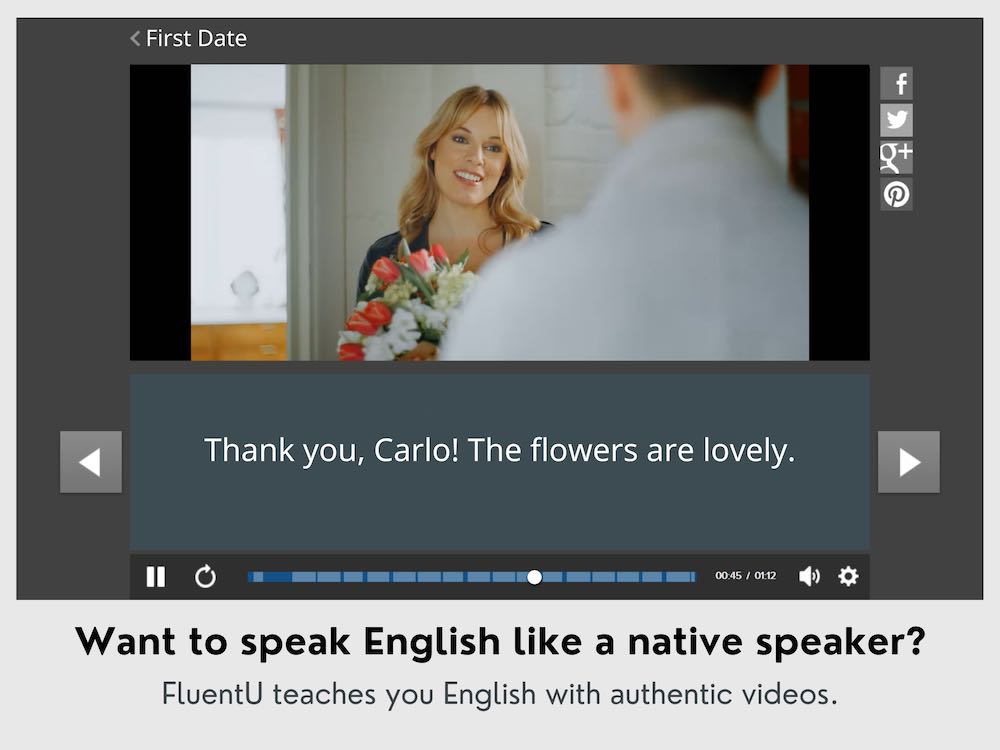
Gymglish vs. Duolingo
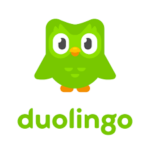
In this match-up, I feel like both of these apps really work well, but Duolingo deals more explicitly with things like grammar. In other words, Gymglish and Duolingo would work really well together.
Here’s our full review of Duolingo.
Gymglish vs. Rosetta Stone

But since Gymglish has engaging story lines and characters, Rosetta stone feels pretty basic at times.
In this match-up, I’d say that you might be able to learn more vocabulary quickly with Rosetta Stone, but in terms of organic learning in context, I’d gay Gymglish does better here.
Here’s our full review of Rosetta Stone.
What Does Gymglish Cost?
The Basic plan is $12 per month, which comes with up to three lessons per week.
The Premium plan is $29 per month for five lessons per week.
The Gold plan is $39 per month for seven lessons per week.
Here’s the link to the Gymglish pricing page.
The Final Verdict on Gymglish
Gymglish is a pretty solid learning platform for general learners who are in the intermediate or advanced stages of learning and enjoy short, daily lessons. It’s best suited for revision or as a supplement to another language course. The detailed feedback, the adaptive learning approach and the personalized revision kit make it stand out from many other educational apps and courses.
However, it’s not ideal for those who are just starting out or who need speaking and writing practice.
You can always sign up for a free trial and give it a go!
While Gymglish is a pretty strong and unique tool,
And One More Thing...
If you like learning English through movies and online media, you should also check out FluentU. FluentU lets you learn English from popular talk shows, catchy music videos and funny commercials, as you can see here:
The FluentU app and website makes it really easy to watch English videos. There are captions that are interactive. That means you can tap on any word to see an image, definition, and useful examples.
For example, when you tap on the word "searching," you see this:
Learn all the vocabulary in any video with quizzes. Swipe left or right to see more examples for the word you’re learning.

FluentU helps you learn fast with useful questions and multiple examples. Learn more.
The best part? FluentU remembers the vocabulary that you’re learning. It gives you extra practice with difficult words—and reminds you when it’s time to review what you’ve learned. You have a truly personalized experience.
Start using the FluentU website on your computer or tablet or, better yet, download the FluentU app from the iTunes or Google Play store. Click here to take advantage of our current sale! (Expires at the end of this month.)
